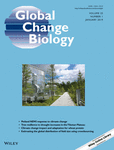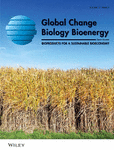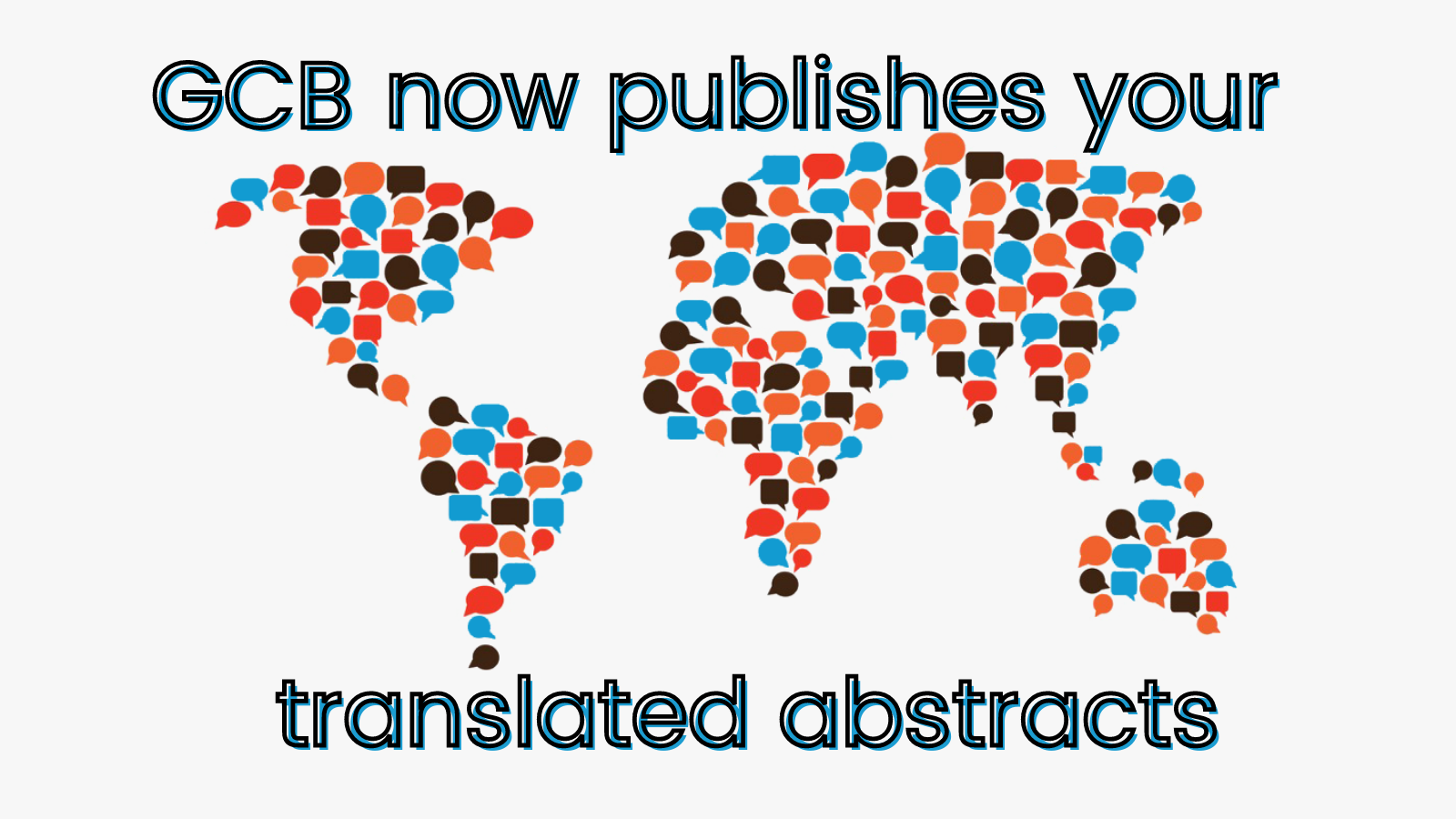Journal list menu
Export Citations
Download PDFs
ISSUE INFORMATION
RESPONSE TO THE EDITOR
Contribution of soil inorganic carbon to atmospheric CO2: More important than previously thought
- Pages: e1-e3
- First Published: 08 October 2018
OPINION
FACE facts hold for multiple generations; Evidence from natural CO2 springs
- Pages: 1-11
- First Published: 13 November 2018
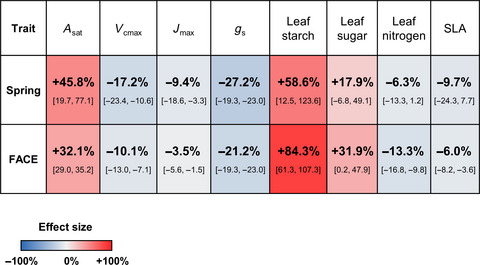
Plant responses to future, elevated atmospheric CO2 from single-generation FACE experiments were compared with those observed in naturally high carbon dioxide springs, following multi-generation exposure. Responses for a panel of traits, including enhanced photosynthesis and reduced stomatal conductance, were broadly conserved suggesting that FACE experiments are a good proxy for long-term, multi-generational responses to this facet of the changing climate. These findings have implications for enhanced global greening, since our data suggest that vegetation will not acclimate to elevated, CO2 growth stimulation is likely to persist. Similarly, the data are relevant for future plant breeding and conservation strategies.
Pathways of mineral-associated soil organic matter formation: Integrating the role of plant carbon source, chemistry, and point of entry
- Pages: 12-24
- First Published: 19 October 2018
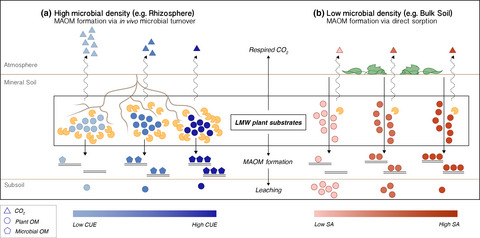
We posit that how a plant carbon compound forms slow-cycling mineral-associated soil organic matter is tied to its point of entry to the mineral soil. In our spatially explicit conceptual model of soil organic matter formation, the microbial formation pathway is more dominant for belowground root inputs entering into the rhizosphere, whereas the direct sorption pathway is more dominant for aboveground dissolved organic matter inputs entering into the bulk soil. Due to these differences, the primacy of biotic vs. abiotic controls on soil organic matter formation will vary at fine spatial scales in soil space.
RESEARCH REVIEW
Climate change opens new frontiers for marine species in the Arctic: Current trends and future invasion risks
- Pages: 25-38
- First Published: 08 October 2018

This paper examines the current status and future risks of biological invasions in the marine environments of the Arctic, within the context of climate change, natural resource development, and expanded Arctic shipping. The number of nonindigenous species introductions varied across the region with the greatest number of introductions recorded in the Iceland Shelf, followed by the Barents Sea and the Norwegian Sea. Most introductions were attributed to vessels, natural spread, and aquaculture activities. Vector management, horizon scanning, early detection, rapid response, and a pan-Arctic biodiversity inventory are recommended to address future invasion risks.
PRIMARY RESEARCH ARTICLES
Compositional response of Amazon forests to climate change
- Pages: 39-56
- First Published: 08 November 2018
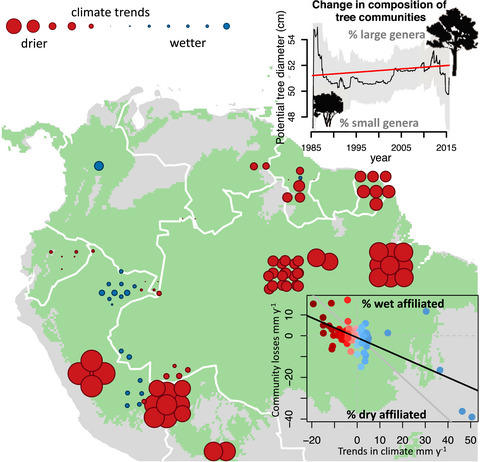
Tropical forests are getting hotter—and in places drying—but how are they responding to the changing climate? A new analysis assesses long-term records of thousands of tree species from across the vast Amazon basin. The team of 102 researchers discovered subtle but troubling changes in forest communities since the 1980s: trees preferring the wettest conditions and humid understorey are now in decline. With drought-resistant plants gaining too slowly to track the changing climate Amazon forests appear increasingly vulnerable.
Carbon sequestration in riparian forests: A global synthesis and meta-analysis
- Pages: 57-67
- First Published: 08 November 2018
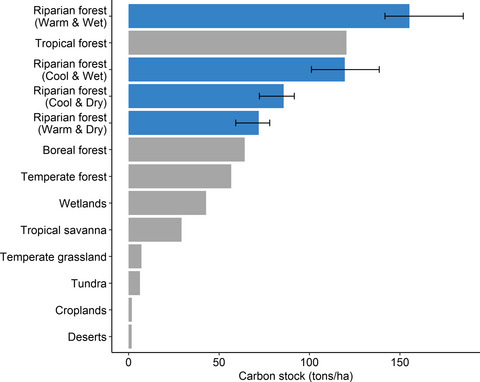
We analyzed data from around the world to identify general patterns of carbon sequestration in riparian forests. We found that the carbon stored in mature riparian forest rivals the highest estimates for any biome, and that carbon accumulation is faster over the first ten years in planted forests than naturally regenerating forests. Riparian forests are known to provide multiple ecosystem services, and our results demonstrate that carbon sequestration can be an additional co-benefit. Despite their relatively small area, investing in riparian forest restoration can be a valuable strategy for contributing to both climate change mitigation and ecological integrity.
Natural forests exhibit higher carbon sequestration and lower water consumption than planted forests in China
- Pages: 68-77
- First Published: 18 October 2018
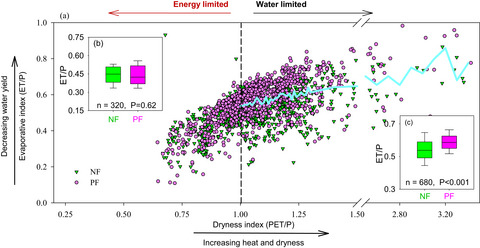
While there was no significant difference in water consumption between PF and NF in energy-limited areas (dryness index < 1), water consumption was significantly higher in PF than that in NF in water-limited regions (dryness index > 1). NF should be properly valued in terms of maximizing the benefits of carbon sequestration and water yield. Future forest plantation projects should be planned with caution, particularly in water-limited regions where they might have less positive effect on carbon sequestration but lead to significant water yield reduction.
Evaluating regional resiliency of coastal wetlands to sea level rise through hypsometry-based modeling
- Pages: 78-92
- First Published: 30 October 2018
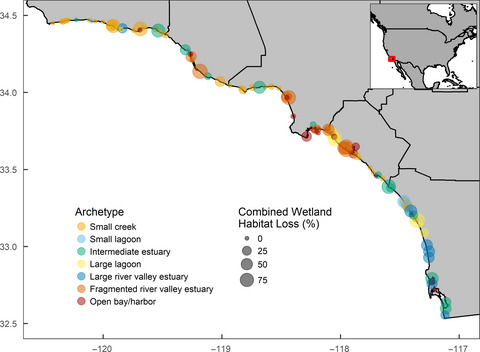
Variability in sea level rise (SLR) drivers and responses makes it difficult to predict SLR effects across individual wetlands or wetland types and to develop a holistic perspective on regional SLR response. To improve regional predictions, we developed a model based on wetland elevation, or hypsometry, that augments existing SLR assessments by considering multiple spatial scales, addressing data gaps, and accommodating wetland diversity. Our approach can inform restoration and adaptation efforts of SLR vulnerability, improve understanding of the SLR drivers relevant to specific wetlands, and highlight significant data gaps that impede SLR response modeling across spatial scales.
The response of boreal peatland community composition and NDVI to hydrologic change, warming, and elevated carbon dioxide
- Pages: 93-107
- First Published: 08 October 2018
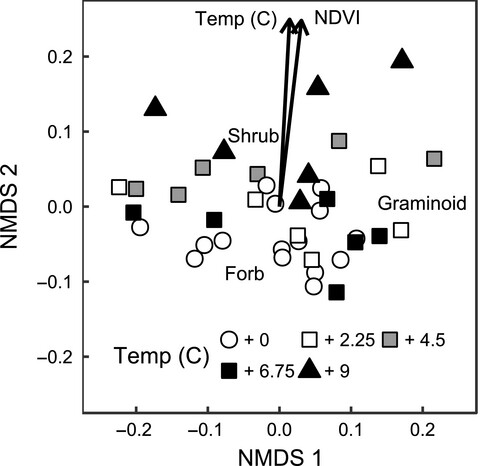
Widespread changes in satellite-observed NDVI values have been recorded across the arctic and boreal region in recent decades. In an effort to characterize these changes, we measured the response of NDVI to changes in community composition and leaf area in two types of boreal peatland ecosystems. We found strong relationships between NDVI and the percent cover of different plant functional types, in particular of shrubs. Our results support recent studies that have shown strong correlations between species cover, productivity, and NDVI in far northern ecosystems.
Range change evolution of peat mosses (Sphagnum) within and between climate zones
- Pages: 108-120
- First Published: 22 October 2018

This study tests the hypothesis that Sphagnum (peat mosses) initially diversified at high latitudes of the Northern Hemisphere and later extended their ranges to tropical and Southern Hemisphere regions. The ancestral geographic area for the genus as a whole is ambiguous, but the four major subgenera, comprising some 90% of the generic species diversity, unambiguously originated at high latitudes. Sphagnum provides a model for research on genomic, ecological, and morphological changes associated with adaptation to warm climates from cold or cool climate ancestors.
Legacies of La Niña: North American monsoon can rescue trees from winter drought
- Pages: 121-133
- First Published: 22 October 2018

In the southwestern United States, tree growth is both a strong driver of regional carbon fluxes and highly variable, partly due to the El Niño Southern Oscillation. Synthesis of tree ring data shows three species experience legacy effects of La Niña-related drought and are more reliant on monsoonal precipitation during recovery. Recognizing ENSO-phase specific growth–climate responses allows for improved understanding of regional controls on tree growth. The key importance of the North American monsoon suggests these forests will be sensitive to future changes in the character of large-scale climate phenomena such as the ENSO and NAM.
Ticket to spawn: Combining economic and genetic data to evaluate the effect of climate and demographic structure on spawning distribution in Atlantic cod
- Pages: 134-143
- First Published: 09 October 2018
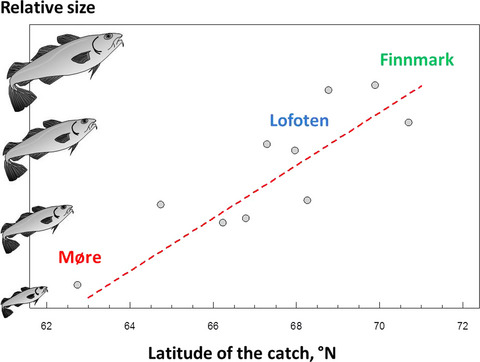
Climate warming and harvesting affect the dynamics of species across the globe through a multitude of mechanisms, including distribution changes of spawning fish. For the Northeast Arctic cod, two major hypotheses have been put forward to explain these changes: climate and harvesting. Here, we evaluate these hypotheses by combining two sources of modern data: economic data from the Norwegian fisheries and genetically determined individual fish sampled at the spawning grounds. Our results indicate that demographic size truncation due to harvesting is currently not the dominating factor in shaping spawning ground distribution, but our results provide support for the climate hypothesis.
Uneven winter snow influence on tree growth across temperate China
- Pages: 144-154
- First Published: 08 October 2018
Climate change impact and adaptation for wheat protein
- Pages: 155-173
- First Published: 22 November 2018
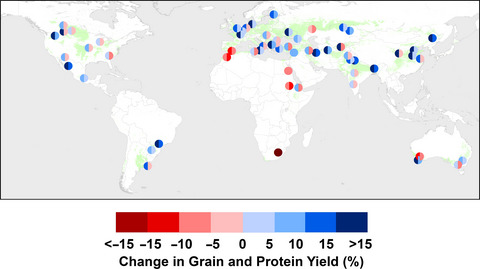
Potential benefits of elevated atmospheric CO2 concentration by 2050 on global wheat grain and protein yield are likely to be negated by impacts from rising temperature and changes in rainfall, but with considerable disparities between regions. Grain and protein yields are expected to be lower and more variable in most low-rainfall regions, with nitrogen availability limiting growth stimulus from elevated CO2. Introducing genotypes adapted to warmer temperatures could boost global wheat yield by 7% and protein yield by 2%, but grain protein concentration would be reduced by −1.1% points, representing a relative change of −8.6%.
Estimating the global distribution of field size using crowdsourcing
- Pages: 174-186
- First Published: 22 November 2018
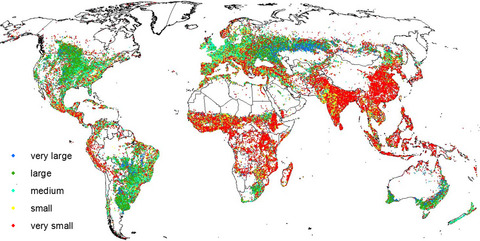
This paper demonstrates a unique approach to quantifying and mapping agricultural field size globally using crowdsourcing. A campaign was run in June 2017 where participants were asked to visually interpret very high resolution satellite imagery from Google Maps and Bing using the Geo-Wiki application. The results show that smallholder farms occupy up to 40% of agricultural areas globally, which means that, potentially, there are many more smallholder farms in comparison with the two different current global estimates of 12% and 24%. The global field size map and the crowdsourced data set are openly available.
Genotypic variation in phenological plasticity: Reciprocal common gardens reveal adaptive responses to warmer springs but not to fall frost
- Pages: 187-200
- First Published: 22 October 2018
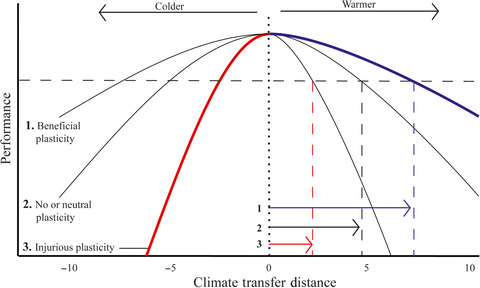
Using replicated common gardens across Arizona, we examined the genotypic variation and plasticity of two phenology traits, fall bud set and spring bud flush, among 16 populations of Fremont cottonwood. We found that genotypes experiencing warming generally exhibited moderate, adaptive plastic responses, while genotypes transferred to colder climates showed large, non-adaptive plastic responses. Furthermore, the magnitude of plasticity was related to source climate, where hotter, drier populations had larger plastic responses. Finally, we found evidence of local adaptation in bud set, with mortality related to an increasing mismatch of timing as the transfer distance between home and garden climate increased.
Environmental drivers interactively affect individual tree growth across temperate European forests
- Pages: 201-217
- First Published: 22 October 2018

Tree growth responds to global-change drivers such as climate change or atmospheric deposition and to local land-use drivers such as forest management. Yet, large geographical-scale studies examining interactive growth responses to multiple global-change drivers are relatively scarce and rarely consider management effects. We assessed interactive effects of three global-change drivers (temperature, precipitation and nitrogen deposition) on tree growth of three study species across Europe (Quercus robur/petraea, Fagus sylvatica, Fraxinus excelsior) and accounted for management effects for Quercus. We demonstrate that growth responds interactively to these drivers, with species-specific sensitivities. Furthermore, past management modulated the effects of changing temperatures on Quercus’ growth.
Consistent trophic amplification of marine biomass declines under climate change
- Pages: 218-229
- First Published: 08 October 2018
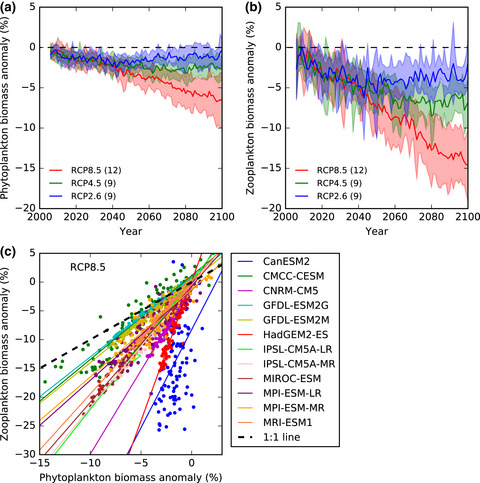
Trophic amplification of twenty-first century marine biomass declines is a consistent feature of Earth System Models, across different scenarios of future climate change. An analytical explanation of this trophic amplification can be derived from generic plankton differential equations. Using an ocean biogeochemical model, we show that the inclusion of variable C:N:P phytoplankton stoichiometry can substantially increase the trophic amplification of biomass declines in low latitude regions.
Extreme drought pushes stream invertebrate communities over functional thresholds
- Pages: 230-244
- First Published: 22 October 2018
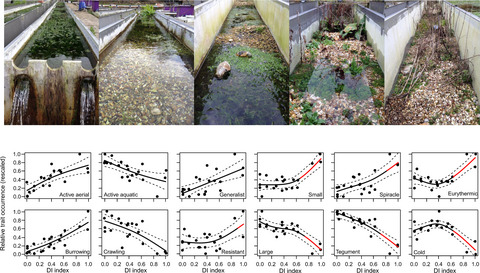
A growing number of studies are using species' traits to diagnose and predict their responses to long-term climate change, but few have explored trait sensitivity to extreme climatic events, such as prolonged droughts. We combined a large manipulative flow experiment with traits-based analyses to elucidate functional responses of stream macroinvertebrate communities to intensifying drought. Drought caused abrupt and pervasive changes in community trait profiles and triggered population collapses of certain functional groups, most notably those comprising non-flying taxa. Our detection of multiple response thresholds indicates that traits could be valuable functional biomarkers for species- and community-level resistance to extreme disturbance.
Tree resilience to drought increases in the Tibetan Plateau
- Pages: 245-253
- First Published: 29 October 2018
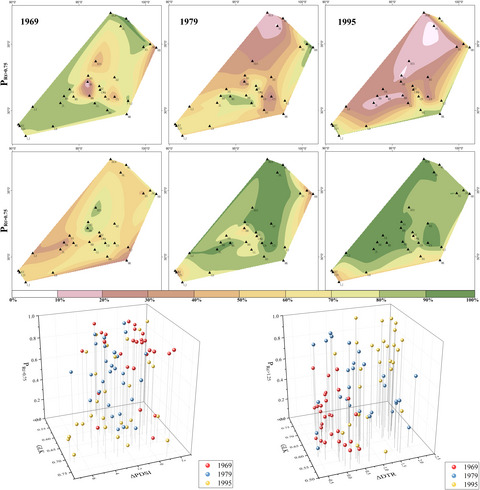
Tree resilience is important for maintaining the healthy growth of forests, yet remains largely unquantified. Examination of tree resilience to drought extremes from 28 sites of juniper forests in the Tibetan Plateau reveals a temporal decreasing trend in tree resistance and an increasing trend in recovery, and a spatial contraction in the area of high resistance and expansion in high recovery. The variation of tree resilience is associated with moisture availability, diurnal temperature range, and growth consistence among trees. The results have implications for predicting tree resilience and identifying areas vulnerable to future climate extremes.
Biomass consumption by surface fires across Earth's most fire prone continent
- Pages: 254-268
- First Published: 01 October 2018

Landscape fire is a key but poorly understood component of the global carbon cycle. We undertook an extensive field survey across Australia to measure rates of biomass consumption by fire. We found that in a typical year, fire consumes the equivalent of about 11% of the carbon captured by vegetation across Australia. In the far north, rates of biomass consumption were about 20 times that in the far south. Our results emphasise that fire management to reduce greenhouse gas emissions should focus on fire-prone tropical savanna landscapes, where the vast majority of fire activity occurs.
Effect of interannual precipitation variability on dryland productivity: A global synthesis
- Pages: 269-276
- First Published: 19 October 2018
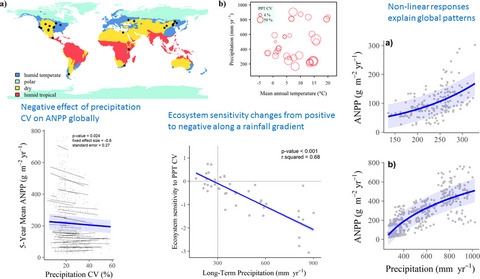
Although projections of climate change anticipating increases in precipitation variability and extreme events are part of the public and scientific narrative, the effects of interannual precipitation variance per se on ecosystem functioning have been largely understudied. This global synthesis indicated that increased precipitation coefficient of variation decreased primary productivity in drylands globally. Arid ecosystems showed a positive response, while mesic ecosystems showed a negative response dominating the global response. Nonlinear productivity responses to precipitation provide mechanisms for contrasting responses across ecosystems. These findings have potential implications for the global carbon cycle and the provision of ecosystem services in drylands.
Delayed herbivory by migratory geese increases summer-long CO2 uptake in coastal western Alaska
- Pages: 277-289
- First Published: 08 October 2018
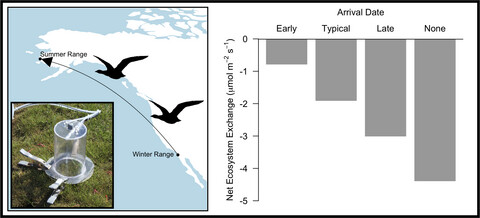
Changing the timing of migration to breeding grounds in coastal western Alaska can influence the ecosystem process of CO2 exchange. Early and late arrival of birds that graze this system can decrease and increase uptake of CO2, respectively. Removing geese from the system greatly enhances CO2 uptake.
Near-future forest vulnerability to drought and fire varies across the western United States
- Pages: 290-303
- First Published: 15 November 2018
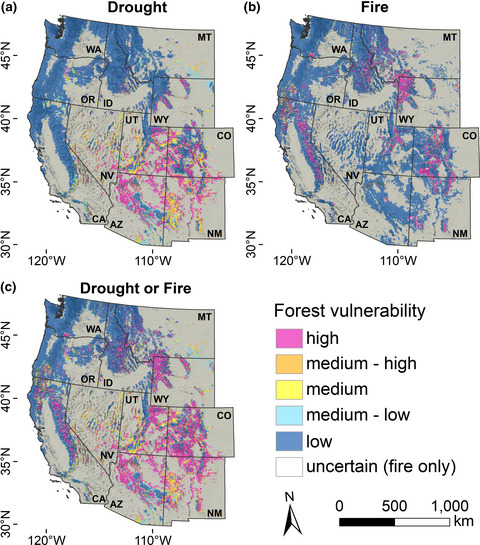
Across the western US, near-future forest vulnerability to drought and fire is expected to be the lowest in the Pacific Northwest. Forests in parts of the Southwest, Rocky Mountains, and Sierra Nevada Mountains are expected to be highly vulnerable, indicating higher potential for transition to different vegetation types. Forest mortality can have long-term effects on forest composition, carbon sequestration, and important interactions with the atmosphere and feedbacks to future climate. Therefore accurate representation of forest mortality is a critical component of earth system models and essential for evaluating land management strategies and energy policies.
Protected areas act as a buffer against detrimental effects of climate change—Evidence from large-scale, long-term abundance data
- Pages: 304-313
- First Published: 04 November 2018
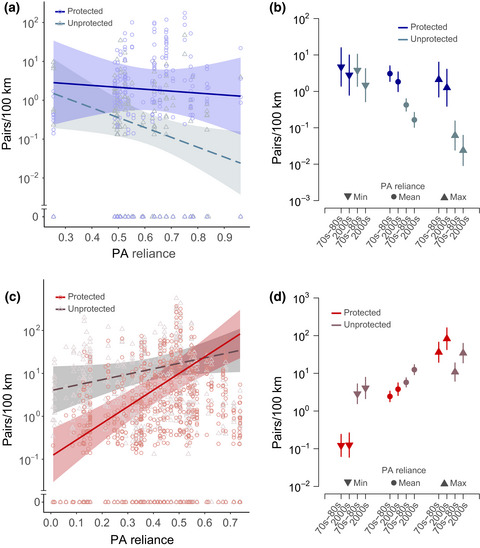
Climate change is altering species distributions and while habitat loss and fragmentation may hamper species ability to follow their climatic envelopes, protected areas (PAs) may be crucial in this process. We studied the performance of PAs on expanding and retracting ranges by using long-term abundance data of 100 land bird species. PAs were able to buffer against compounding effects of climate change by mitigating the retraction of northern species and enhancing the expansions of southern species relying on PAs and thus encouraging to wider conservation programs on currently unprotected land.
Global ammonia emissions from synthetic nitrogen fertilizer applications in agricultural systems: Empirical and process-based estimates and uncertainty
- Pages: 314-326
- First Published: 25 October 2018
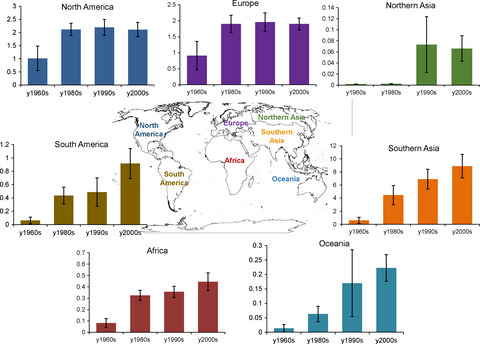
Based on the process-based DLEM-Bi-NH3 module, global NH3 emissions from N fertilizer use have increased by 14.8 Tg N/year during the period 1961–2010. At the regional scale, southern Asia, including China and India, has accounted for more than 50% of total global NH3 emissions since the 1980s. Rice cultivation has been the largest contributor to total global NH3 emissions since the 1990s, followed by corn and wheat. In addition, results show that empirical methods without considering environmental factors (constant emission factor in the IPCC Tier 1 guideline) could underestimate NH3 emissions in the context of climate change, with the highest difference (i.e., 6.9 Tg N/year) occurring in 2010.
The influence of climatic legacies on the distribution of dryland biocrust communities
- Pages: 327-336
- First Published: 30 October 2018
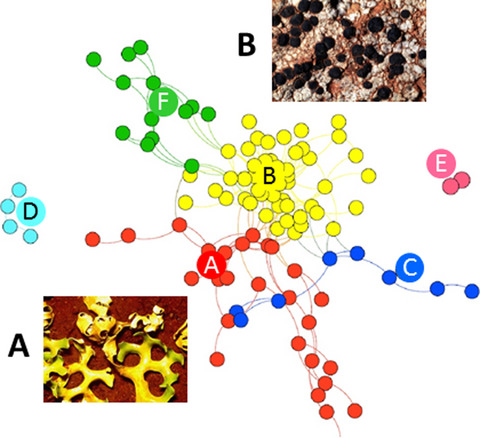
A knowledge of climatic legacies can improve our understanding of how species might change under altered climates and land uses. Ecological clusters of biological soil crust taxa responded differently to climatic legacies. Rainfall and temperature legacies influenced the current distribution of major ecological clusters of biocrust species.
New insights into adaptation and population structure of cork oak using genotyping by sequencing
- Pages: 337-350
- First Published: 25 October 2018
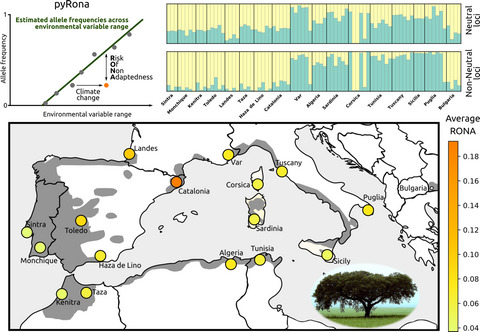
Quercus suber samples from the species' entire distribution range are used to assess population genetic structure, selection signatures, and risk of non-adaptedness using GBS. The pyRona software was developed to apply the RONA method in large scale and broader scopes. Results reveal an essentially unstructured species, where a balance between gene flow and local adaptation keeps a somewhat homogeneous gene pool across its distribution, but allowing variation clines for individuals to cope with local conditions. RONA analyses suggest that for most sampled locations, the cork oak should not require large shifts in allele frequencies to survive the predicted climatic changes.
Divergent trends in the risk of spring frost damage to trees in Europe with recent warming
- Pages: 351-360
- First Published: 19 October 2018
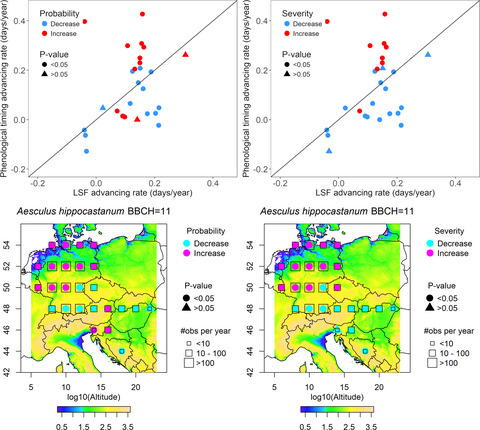
This study examined the well-known “increased frost damage” hypothesis by Cannell (1985), based on long-term phenological records and climate data. Temporal changes in the risk of spring frost damage with recent warming vary largely depending on the species and geographical locations. Species whose phenology was especially sensitive to climate warming tended to have increased risk of frost damage. Geographically, compared with continental areas, maritime and coastal areas in Europe were more exposed to increasing occurrence of frost and these late spring frosts were getting more severe in the maritime and coastal areas.
Tree stem bases are sources of CH4 and N2O in a tropical forest on upland soil during the dry to wet season transition
- Pages: 361-372
- First Published: 26 October 2018

Methane and nitrous oxide are important trace greenhouse gases (GHG) but the potential for tropical forests on upland soils to mediate trace GHG exchange with the atmosphere is poorly characterized. We demonstrate that tropical trees stems on upland soils can act as a sink for methane during the dry season, but become a source of methane and nitrous oxide during the wet season. Contrary to expectations, trace GHG fluxes from tree stems were not related to fluxes measured at the soil surface; instead methane and nitrous oxide fluxes were influenced by tree species identity and decomposition processes.




